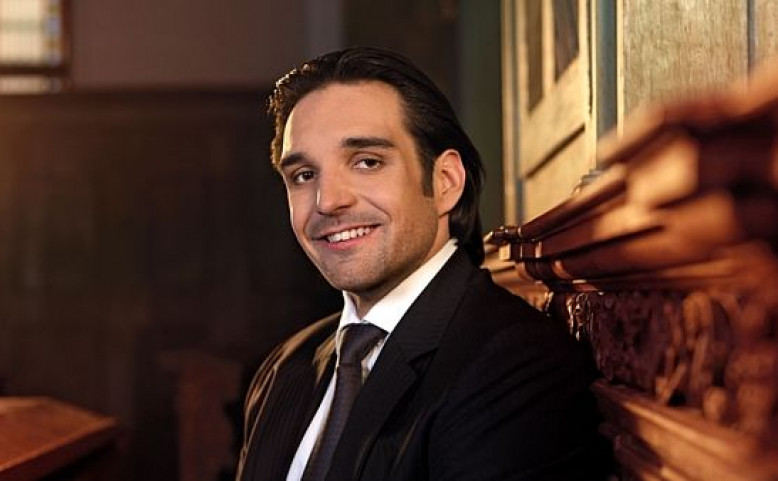
17. 11. 2022, 7 p.m.
Janáček Theatre
Welsh National Opera Orchestra
Conductor: Tomáš Hanus
Baritone: Adam Plachetka
In cooperation with Czech Army Central Band.
The concert lasts 85 minutes including a 25-minute intermission.
Benjamin Britten: Four Sea Interludes from the opera Peter Grimes, op. 33a
Antonín Dvořák: Biblical songs, op. 99
Richard Wagner: Prelude and Liebestod Tristan
Leoš Janáček: Sinfonietta, JW VI/18
Probably Britain’s most important composer, Benjamin Britten drew attention to himself with his first opera, Peter Grimes, which he created during the difficult years of World War II. Immediately after its premiere in 1945, it was a huge international success. The highly sophisticated score connects individual scenes with remarkable interludes that are attractive in their compositional uniqueness and excellent instrumentation. The composer thus adapted them so that they can be performed separately in concert.
Biblical Songs was created during Antonín Dvorak’s visit to America in 1894. These ten songs for alto with piano accompaniment are written with words from David´s Book of Psalms. They are very simply designed songs, but this renders them more impressive and spiritually stronger. Within them, Dvořák talks intimately with God, full of trust and devotion. Immediately after the premiere, it was clear that Biblical Songs would mark the apex of the genre. One year later, the composer also adapted the first five songs from the series for the symphony orchestra.
In the early 1850s, Richard Wagner became acquainted with the book The World as Will and Representation by the German philosopher Arthur Schopenhauer. It significantly changed his view of being and, of course, fundamentally influenced his opera works. One such work is the opera Tristan and Isolde, which he composed in 1857-59. Within it, Wagner exposes the inner worlds of the title characters, whose love, doomed from the beginning to destruction, finds fulfilment in death. The compositions Prelude and Liebestod (Love-Death) form the beginning and end of the opera, and are proof of Wagner´s mastery of his art, as well as the ultimate example of romanticism.
Leoš Janáček´s Sinfonietta is the complete opposite. It is a composition full of the energy and optimism for the future that was associated with the first years of Czechoslovakia. It was also closely connected with the Sokol movement. At the beginning of 1926, the composer was asked by the editors of the Lidové noviny newspaper to write “some notes” to serve as a salutation at the upcoming 8th Sokol festival in Prague. Janáček went for fanfares. He began his work in March 1926, and the fanfares eventually grew into a symphonic composition which he called the Military Sinfonietta because of the participation of an army band. It was offered to the organisers of the festival, and subsequently included in the programme of the Czech Philharmonic concert dedicated to the youth of Sokol. The composer´s new piece was performed for the first time at a 26th June 1926 concert, which was also broadcast on the radio. Apart from the players of the Czech Philharmonic, members of the Prague garrison band took part, and it was a great success. The first printed edition of Janáček´s famous composition was published in 1927 by Universal Edition simply under the name Sinfonietta, which is how we know it today. It is undoubtedly one of the top symphonic works of the 20th century.








